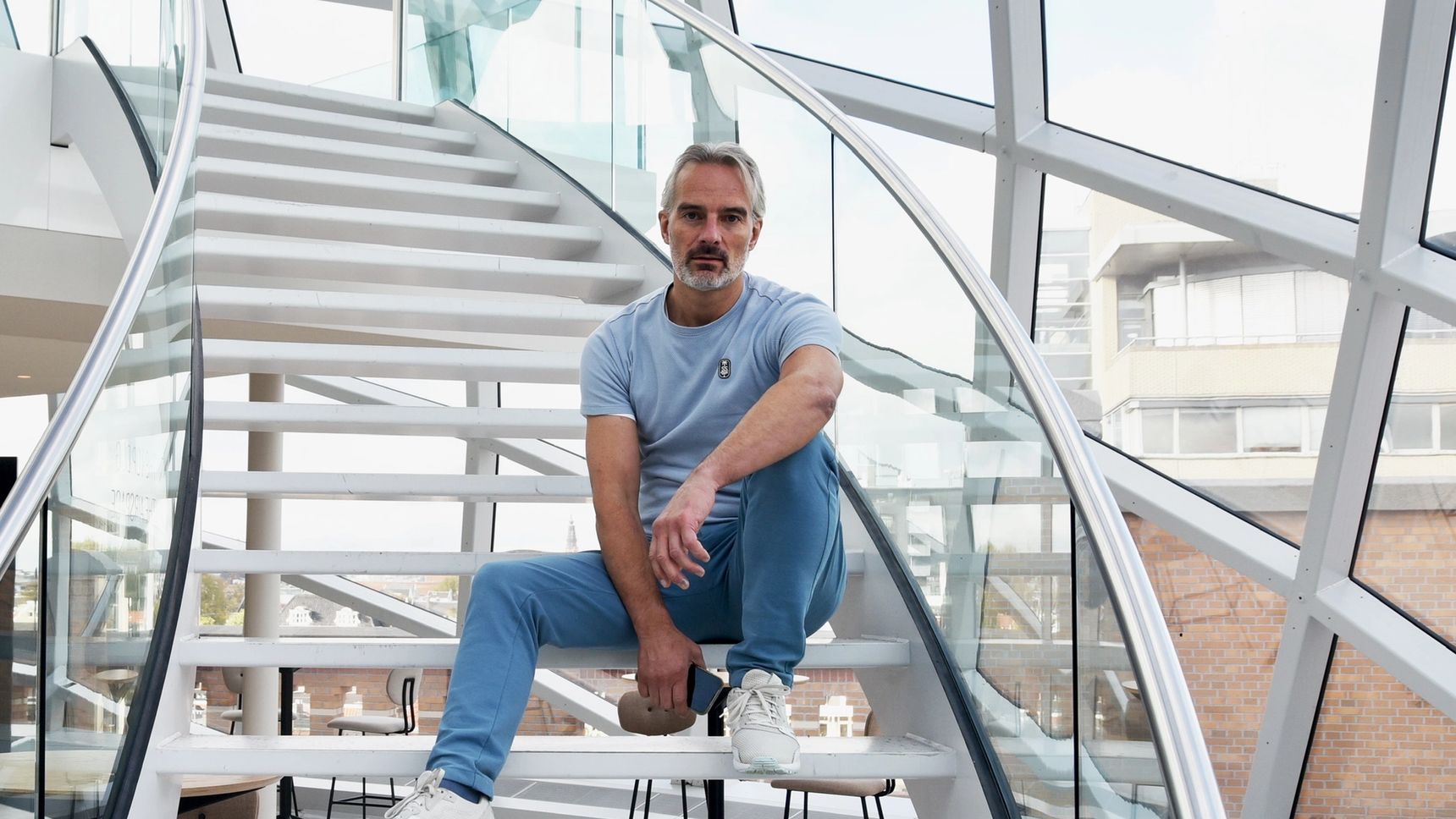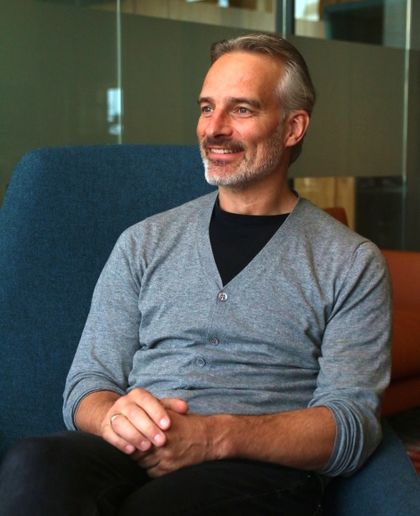
Mark van Leest
Lead Data Solutions
13 Aug 2025, 8 minutes
Turning data into business gold: the In2Intel story powered by Hypersolid
Introduction
Let’s be clear: most companies are not short on data. Even more so: between 2021 and 2024, the amount of data managed by large organizations tripled, growing from around 50 to nearly 150 petabytes. So no, companies aren’t short on data. They’re drowning in it. But what they lack is a way to actually make this data useful. And that’s because their data infrastructure is lacking. Systems don’t talk to each other, analytics get trapped in dashboards, and big promises about AI rarely make it past the proof-of-concept stage.
Mark van Leest has seen that story play out far too many times. As the founder and Lead Data Solutions of our partner In2Intel, he helps companies to regain control of their data, make their systems align, and thereby actually turn all of this information into smarter, faster decisions. We sat down with him to talk about his journey, how In2Intel unlocks real business value from data, and why the partnership with Hypersolid works so well.
Interview
Q: How did this journey start for you?
I actually started out in media. After working for several media companies, I joined Dutch professional football club AFC Ajax and spent about 12.5 years there, mostly as their Head of Media. In that role, I helped build their entire media operation: Ajax TV, CDN, streaming, websites, social media, basically the whole content ecosystem.
That’s also when I first came into contact with Hypersolid. We started using WMTs (Wireless Multiplex Terminals) from their venture Mobile Viewpoint. They were basically mobile satellite receivers that let us stream live over bonded 4G and 5G, which was a huge step forward, because Mobile viewpoint allowed us to do so much more. Suddenly, we could do new and exciting things, like sending live signals straight from the team bus. As a result, during Ajax’s 30th championship, we streamed the live feed directly to the big screens next to the stage while the players were still on their way there. Before Mobile viewpoint, we would have needed helicopters and broadcast trucks. Now, a couple of mobile encoders did the trick at a much lower price.

Mobile Viewpoint offered portable and fixed encoding devices that enabled fast and reliable video contribution. Our venture's success led to its acquisition by Vislink in 2021.
Over time, production became increasingly IT-heavy, and I was asked to run the IT department as well. That’s also when we set up AFC Ajax’s first Business Intelligence (BI) department. Up to then, player data was all over the place, so we picked five key systems—player & field tracking, medical, scouting, things like that—and integrated them into Microsoft’s data stack. This approach gave a lot of valuable insights into the football operation of Ajax. And because everybody was working in the same systems, results and players could be compared and benchmarked; a prerequisite for unified data.
Later, we applied the same approach to the business side—merchandising, finance, ticketing—and that’s when I really moved permanently into BI and data. After a few years, I started In2Intel, as I saw that this structural approach to data could offer opportunities for many companies and corporations out there.
That’s also when the collaboration with Hypersolid started. I already knew Schalk Stalman (CEO Hypersolid) from the streaming days. One of our first big projects together was refreshing AFC Ajax’s entire IT landscape and integrating Microsoft Dynamics. After that, they brought us in for other projects, like building citizenM’s data platform. Our partnership has only grown from there.
Q: What do you focus on now at In2Intel?
At In2Intel, we really focus on three main areas: (1) data integration, (2) data analytics and data science, and (3) application integration.
Data integration is basically about connecting all the different systems inside a company and bringing them together in a central data warehouse. That could be a traditional SQL database, or something more modern like Microsoft Fabric, Databricks, or Snowflake. This is basically what every company needs as a foundation to actually create an ecosystem that makes your data work for you.

Since 2019, Mark van Leest and his team have been developing innovative data solutions for companies such as Heineken, Alken Maes, AFC Ajax, and citizenM
Once that foundation is in place, we move into the analytics and data science side of things, which is where we actually start turning that integrated data into real insights. That’s where dashboarding, visualization, AI use cases, and predictive models come in. If you’ve got a single source of truth from your data integration, you can do a lot with it; optimize conversions, build smart reports, even power IoT applications.
The third area is application integration, which is also where we work most closely with Hypersolid. They usually provide the application layer, often an API management layer under a web app or any frontend they build. We then use those integrations on the backend, for example, to feed the data warehouse. So, in a way, we’re building two complementary sides of the same integration layer. This is also the element that closes the loop to the data integration, because it feeds new information into the data warehouse.
Q: That sounds like a great fit. What makes that partnership click?
It really comes down to culture and approach. We’re both no-nonsense, under-promise and over-deliver types. Clients throw problems at us, and we don’t stop until they’re solved. That’s exactly how Hypersolid works, too.
From a technical perspective, we’re both system-agnostic. We don’t push clients to switch platforms if they’re happy with what they have. We simply integrate with whatever is there, which fits perfectly with Hypersolid’s best-of-breed mindset.
And I'm confident enough to say that this makes our partnership work. We’ve already proven it for brands like Heineken, Alken Maes, AFC Ajax, citizenM, HollandsNieuwe, and Vrumona. At In2Intel, we make sure the backend and data layers are rock solid, and Hypersolid then takes care of the frontend and application layer, creating an ecosystem that makes your unique data work for you.
Q: Can you share some examples of the work?
Mark van Leest, Founder and Lead Data Solutions In2Intel
For two multinational FMCG companies, for instance, we built a machine learning solution for product linking, syncing products between databases with completely different SKUs. Before, people had to match those manually. Now, a modular model does it automatically. It’s not tied to a specific language, jargon, or market terms, so it’s scalable and relatively inexpensive. Large language models make normalizing those differences even easier today.
For a global logistics company, we built a platform to track air freight containers. Think of something like an iPhone launch. Suddenly, thousands of containers move from China or India to the West. With predictive planning, they can now optimize container allocation in real time.
And for a business in real estate, we’re connecting multiple Property Management Systems into one unified data platform. Even before the full migration is complete, they can already compare portfolio performance globally, spot underperforming assets, and adjust their strategy accordingly.
All of these examples may seem rather straightforward, but the business impact of these solutions is massive. It increases the efficiency of their operations at scale and, at the same time, optimizes their insights into customer behaviour.

For the Amsterdam-based In2Intel team, data warehousing and creating unified data lie at the heart of their work

The collaboration with In2Intel founder Mark van Leest dates back to the early 2010s
Although we have specialists for all of this, at the same time, we are trying to develop people who can do a bit of everything—the classic ‘sheep with five legs,’ as we say. The idea behind this is that our people need to understand the complete picture when developing. Still, everyone has their core expertise: data architects working on the architecture, data engineers connecting everything, data scientists building models, analysts working with the data, computational scientists developing algorithms, and econometricians handling financial data. We’re very data-tech driven, with little overhead. Even our team leads are hands-on, working directly in the field.
Q: What kind of timeline are we talking about for creating data-driven growth?
What we do is not something you simply set up in a year. So I would actually frame it a bit differently. Take an equity firm, for example; they typically stay in an investment for five to seven years. In that period, they focus on turnaround management and digital transformation. What we do fits perfectly into that time window. Even though we work fast, building a proper data warehouse alone takes six to twelve months. And new data sources keep getting added along the way.
What we typically see is that projects almost always grow beyond the initial scope. That’s because most clients don’t know exactly what’s possible with their data strategy when they start. But once you get going, insights emerge, and that inspires them to do more and more with their data.
So doing it right takes time, and the more insight you get, the more you become inspired to do even more with your data. But make no mistake about it: everything we do always leads to business impact and inspires companies to improve their results.
Q: And what does a company need internally to make these kinds of projects successful?
It really helps if there is someone in the organization who is full of ideas and can get people moving. That can work in two ways. Sometimes, there is already someone with a strong innovation mindset, which makes everything easier because the organization is better prepared.
At other times, we help create that spark by developing a strategy that is so compelling that decision-makers feel inspired to move in that direction.
As a result, we work with both progressive and very traditional companies. In more conservative markets, it can take more effort, and sometimes a bold leader has to take a risk to launch an innovative strategy. But once they do, they are at a big advantage because competitors in those markets are often slower to change.
Q: What role do you play in helping companies get there?
Mark van Leest, Founder and Lead Data Solutions In2Intel
Take AFC Ajax as an example. When we started their BI strategy, they had no clear picture of the data behind their ticket usage. By profiling and segmenting different ticket groups, we discovered they had the potential to sell about 1,500 extra tickets per match, which added up to roughly two million euros in extra revenue per season. Once those kinds of insights are there, it triggers a lot of commitment within the organization to do more with data.
At a logistics company, we analyzed years of unused machine sensor data and discovered that machines were used very differently per location. By profiling and calculating the true cost per machine, they were able to switch to a lease-based model, offering lifts as a service. That made their operation more cost-efficient, created new revenue streams, better maintenance planning, and even a second-hand market for refurbished machines.
These kinds of opportunities only appear once the basics are in place, and that often starts with something as simple but crucial as cleaning up the data properly.
Turning data into real business value doesn’t have to be a long-term dream. It can start today with the right approach. Want to find out what’s possible for your business? Get in touch and let us help you “power your data”.
Get in touch